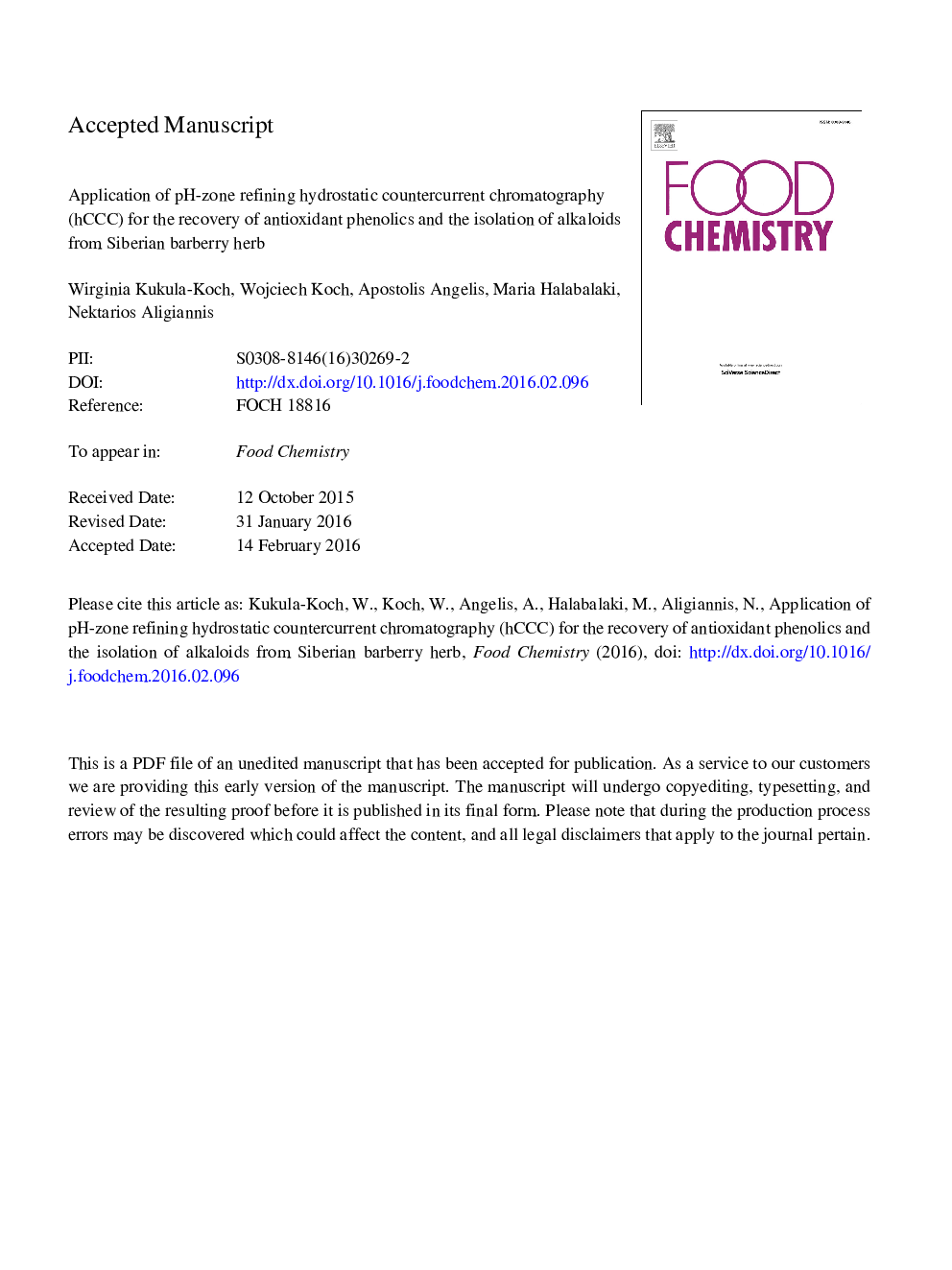| Article ID | Journal | Published Year | Pages | File Type |
|---|---|---|---|---|
| 7589541 | Food Chemistry | 2016 | 35 Pages |
Abstract
The development of a fast hCCC method tailored to recover phenolics of Siberian barberry (Berberis sibirica, Berberidaceae) responsible for the observed strong antioxidant activity was performed. Initially, the optimization of extraction procedure was evaluated based on the antiradical potential assessment (DPPH and Folin-Ciocalteu assays). 100 °C methanol ASE extract exhibited the highest antiradical activity (IC50 = 60 ± 4 μg/mL), and a significant TPC (159 ± 2 mg GAE/g). Thorough determination of phenolic content by UHPLC-DAD-ESI(â)HRMS revealed the presence of 10 phenolics as major constituents, and several groups of alkaloids. pH-zone refining hCCC was chosen as the most promising method for the extract's fractionation due to the ionizable character of its constituents. For this purpose a MtBE-H2O (1:1) system with 10 mM TEA and HCl was applied leading to a phenolic fraction, free of alkaloids, with higher antioxidant capacity (IC50 = 25 μg/mL, TPC = 178 mg GAE/g). Additionally, fractionation of alkaloids was achieved resulting isolation of pharmacologically important alkaloids: magnoflorine and berberine.
Keywords
Apigenin (PubChem CID: 5280443)Magnoflorine (PubChem CID: 73337)Berberidaceaep-Coumaric acid (PubChem CID: 637542)Syringic acid (PubChem CID: 10742)Ferulic acid (PubChem CID: 445858)Caffeic acid (PubChem CID: 689043)Chlorogenic acid (PubChem CID: 1794427)Gallic acid (PubChem CID: 370)Berberine (PubChem CID: 2353)Antioxidant activityCentrifugal partition chromatography
Related Topics
Physical Sciences and Engineering
Chemistry
Analytical Chemistry
Authors
Wirginia Kukula-Koch, Wojciech Koch, Apostolis Angelis, Maria Halabalaki, Nektarios Aligiannis,
